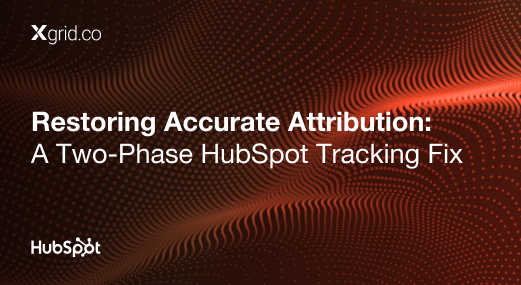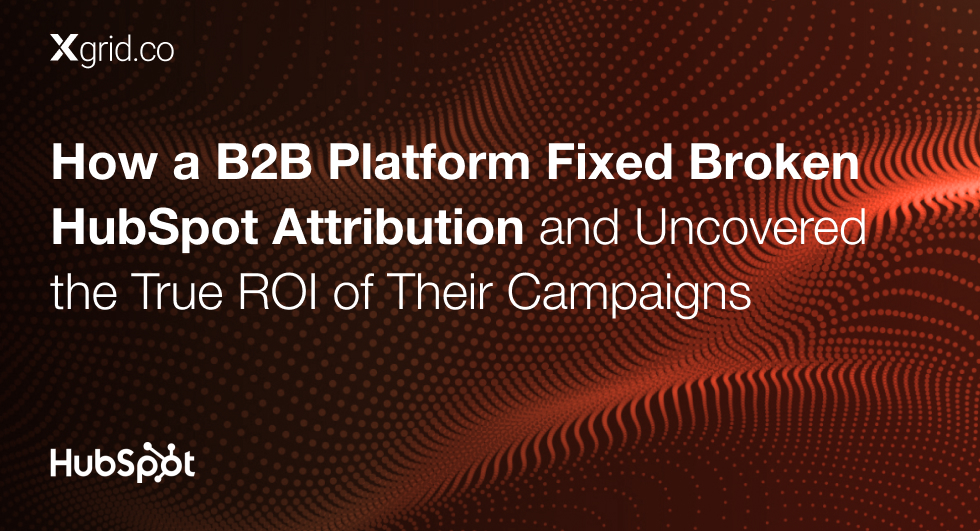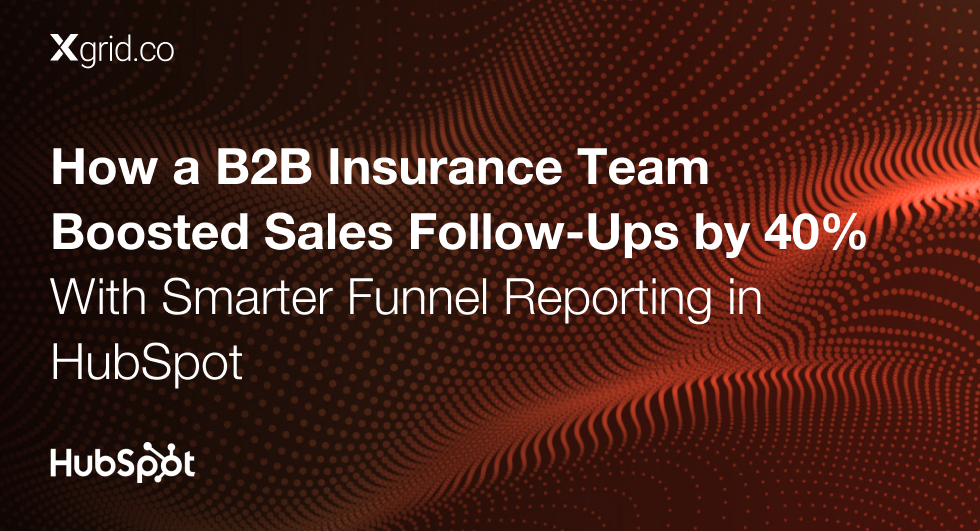No More Siloed Reports in HubSpot: How a B2B Team Proved Marketing’s Impact on Pipeline
Background: From Silos to a Shared Source of Truth
The go-to-market team was using both HubSpot and Salesforce — but you wouldn’t know it by looking at their reporting. There was no clear way to track how a lead moved from MQL to Closed-Won, or what marketing efforts actually influenced revenue. Without unified visibility, budget planning, sales alignment, and campaign optimization were all suffering.
The Problem: Split Funnels, Incomplete Attribution, and Disconnected Teams
Despite having powerful tools in place, teams were stuck with blind spots:
- No single report could show a lead’s full journey — from first touch to revenue
- Attribution models were inconsistent, and UTM data was incomplete or overwritten
- Sales and marketing weren’t aligned on which channels or touchpoints mattered
- Salesforce had duplicate deals and inconsistent naming, which muddied funnel reporting
In short: too much noise, not enough clarity.
The Solution: A Unified Funnel View Built in HubSpot and Synced with Salesforce
Xgrid built a full-funnel reporting system that blended HubSpot lifecycle data, attribution insights, and Salesforce opportunity mapping — all designed to give sales and marketing a shared foundation for decision-making.
What We Did
Built Lifecycle Reporting in HubSpot
- Created custom lifecycle dashboards to track stage progression across Contacts and Companies
- Visualized conversion rates between stages like MQL, SQL, Opportunity, and Customer
Introduced velocity metrics to measure how fast leads moved between stages
Enabled Attribution That Tells the Full Story
- Activated Time-Decay Attribution in HubSpot to credit multi-touch journeys fairly
- Cleaned and standardized UTM parameters to make attribution reports more accurate and trustworthy
Helped marketing understand which sources and campaigns were contributing to actual revenue
Connected HubSpot to Salesforce Opportunities
- Mapped contact and company records in HubSpot to opportunities in Salesforce
- Segmented deals by original source, campaign, and touchpoint type
- Resolved inconsistencies in deal ownership, naming conventions, and lifecycle alignment
Delivered Drillable, Decision-Making Dashboards
- Built custom reports like:
- “Deals by Original Source”
- “Contacts by Engagement Type”
- “Marketing Touchpoints by Deal Stage”
- “Deals by Original Source”
- Provided drill-down access so reps and marketers could explore campaign influence at both the macro and contact level.
Results: One Funnel, One Language, Real Insight
✅ Complete end-to-end funnel visibility from MQL to Opportunity to Closed-Won
✅ Identified top-performing channels and campaigns by revenue contribution
✅ Sales gained clarity on what deserved follow-up
✅ Marketing could finally report on influenced pipeline, not just lead volume
✅ The team now speaks one language when reviewing performance
Key Takeaways
- A unified reporting framework empowers marketing and sales to collaborate — not compete
- Attribution models mean nothing without clean UTM data and consistent campaign structure
- Full-funnel visibility helps prioritize high-impact campaigns, not just high-volume ones
Aligning lifecycle stages in HubSpot with CRM opportunity stages unlocks true ROI insights
Best Practices to Apply
- Use Time-Decay Attribution to fairly credit long B2B journeys with multiple touchpoints
- Standardize naming conventions across HubSpot and Salesforce to reduce reporting noise
- Audit contact-deal connections monthly to maintain data accuracy and funnel trust
- Align marketing lifecycle stages with sales pipeline stages to ensure smooth handoff and reporting clarity
Want to optimize your HubSpot and Salesforce setup for full-funnel clarity? Our HubSpot Consulting Services help teams clean data, align workflows, and unlock actionable insights.




